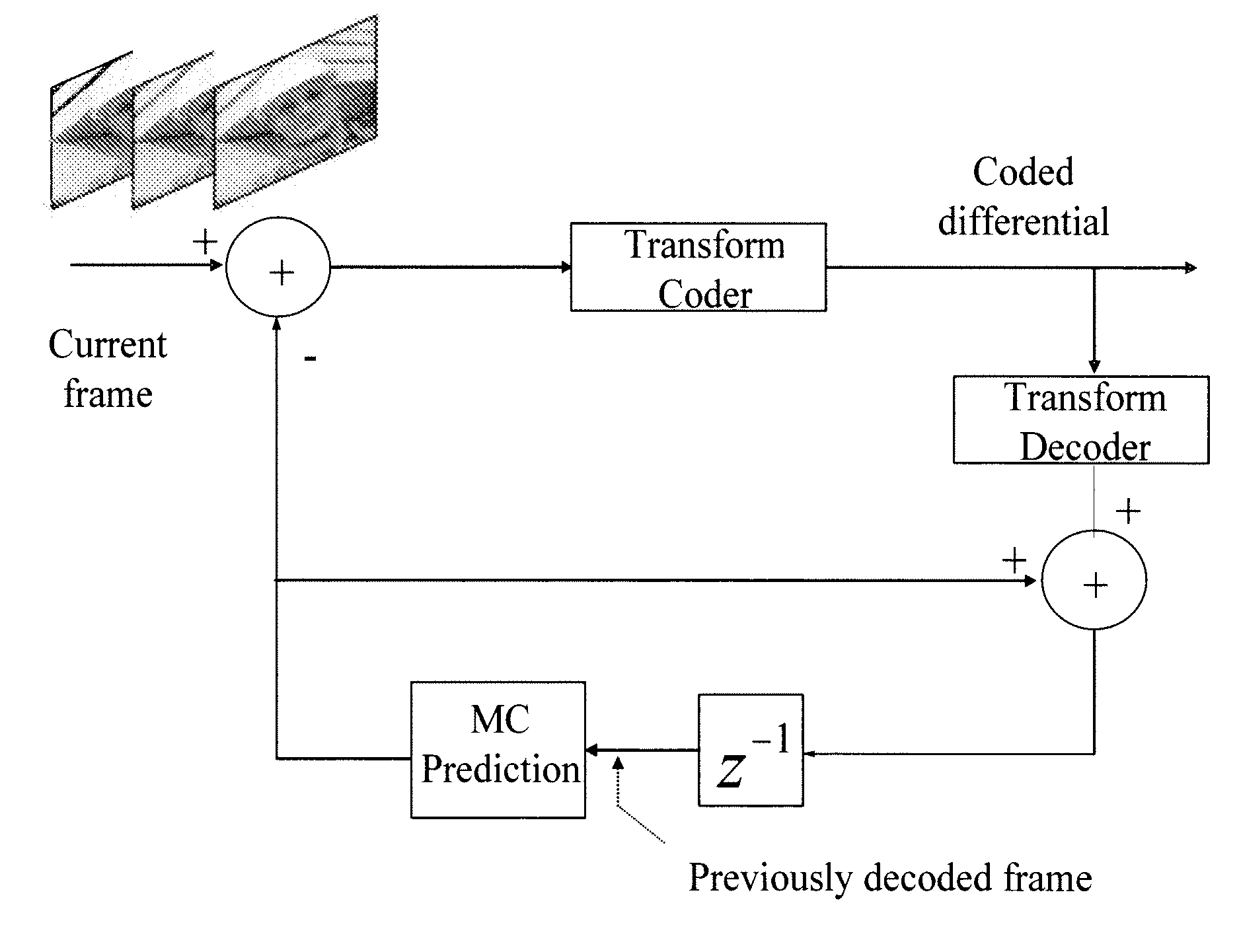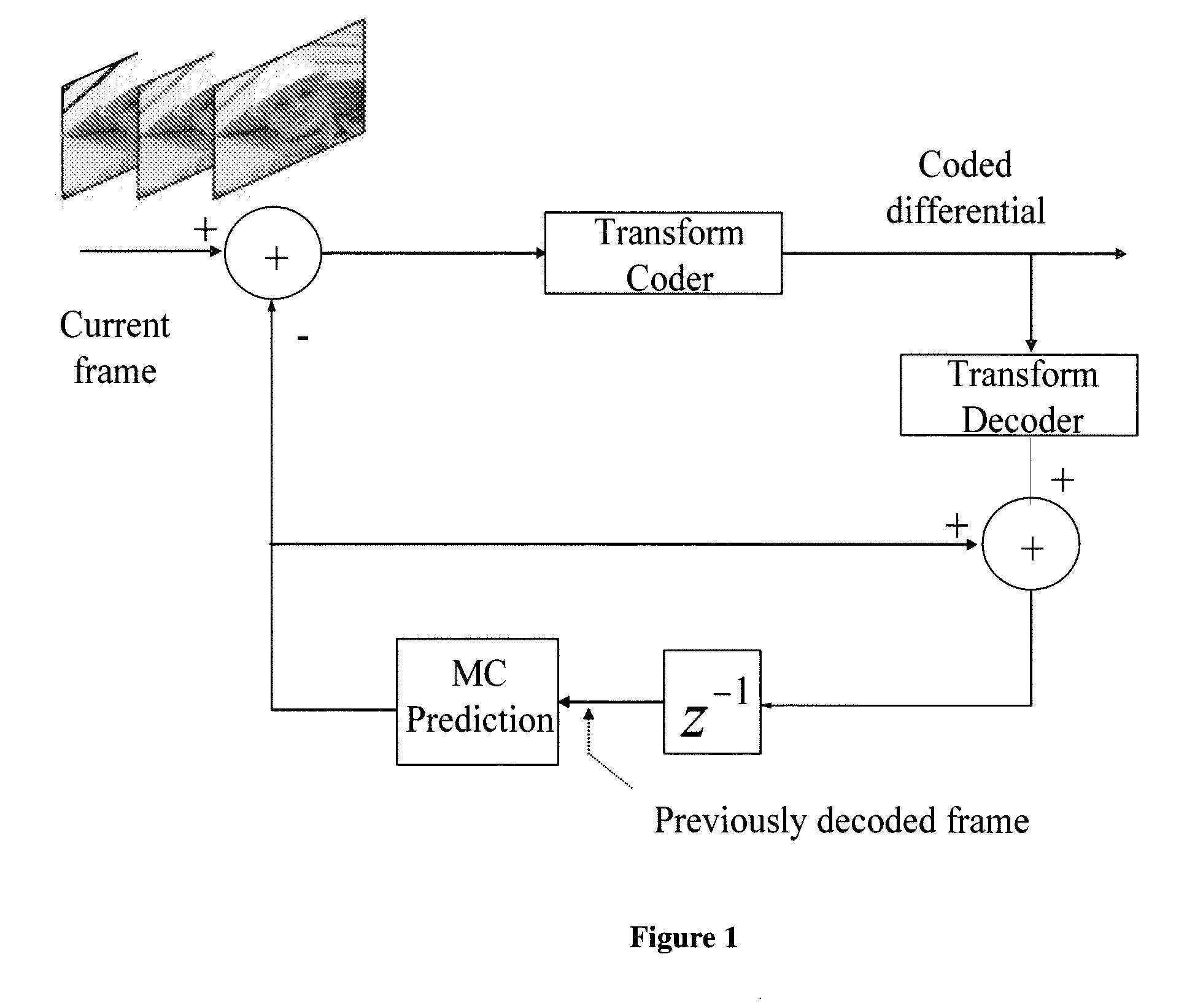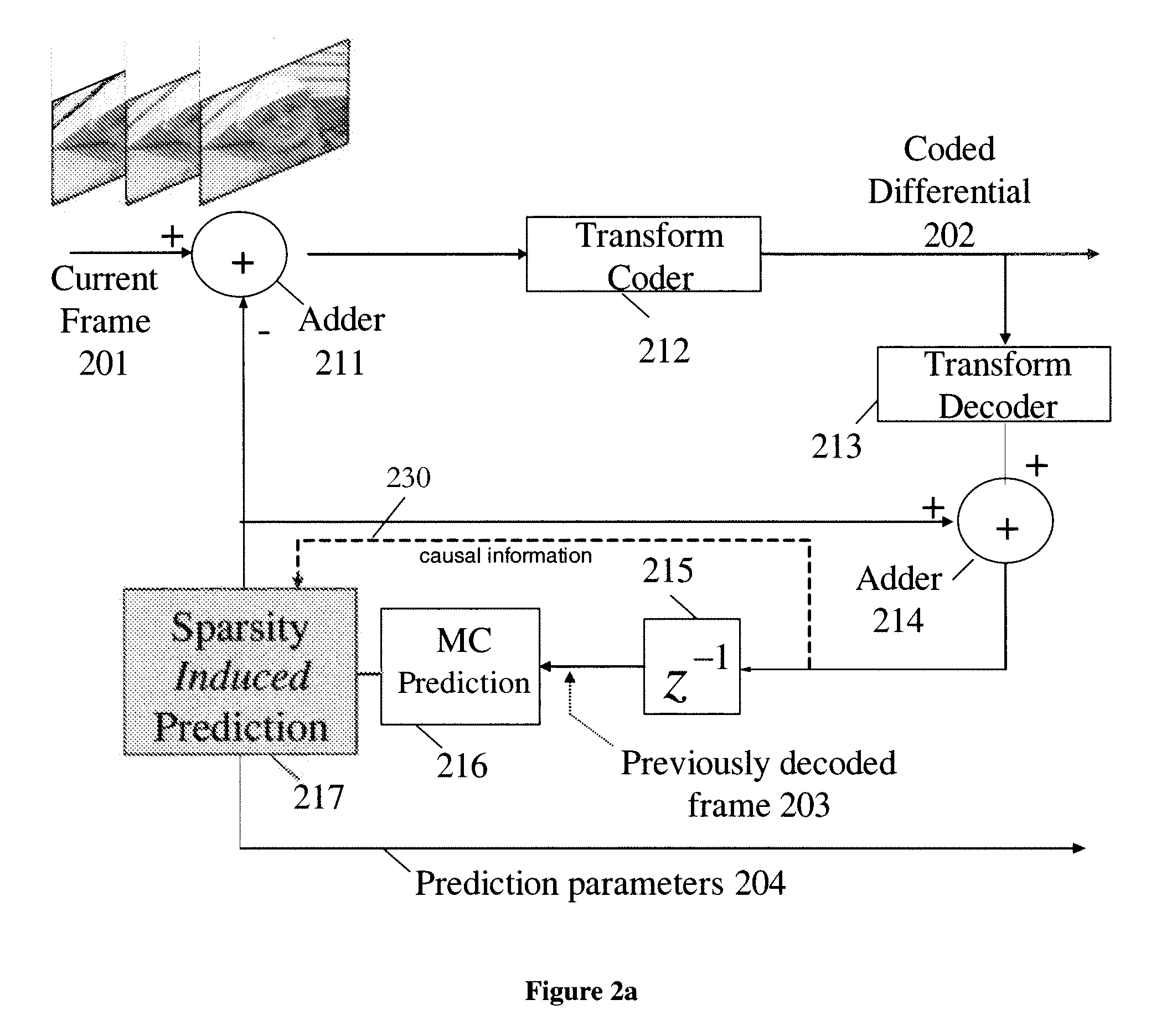Spatial sparsity induced temporal prediction for video compression
a temporal prediction and spatial sparsity technology, applied in the field of compression/decompression, can solve the problems of affecting performance, limited prior solutions, and limited generic motion compensation prediction operation
- Summary
- Abstract
- Description
- Claims
- Application Information
AI Technical Summary
Problems solved by technology
Method used
Image
Examples
Embodiment Construction
[0025] Methods and apparatuses for improved motion compensated prediction of video frames are described. In one embodiment, the method is designed to form an automatic and successful prediction (in the mean squared error sense, for example) during sophisticated temporal evolutions encountered in video sequences. In one embodiment, the method forms a prediction of the frame to be coded based on one or more previously decoded frames.
[0026] The technique described herein can operate successfully in many scenarios where traditional motion compensated prediction fails or does not perform well. For example, when temporally uncorrelated white noise is present in video frames and prediction of the frame to be coded will benefit from the removal of the noise in the previously decoded frame, in one embodiment, the method automatically accomplishes denoising of the previously decoded frame during motion compensated prediction. Also, in one embodiment, when blending of several scenes is presen...
PUM
 Login to View More
Login to View More Abstract
Description
Claims
Application Information
 Login to View More
Login to View More - R&D
- Intellectual Property
- Life Sciences
- Materials
- Tech Scout
- Unparalleled Data Quality
- Higher Quality Content
- 60% Fewer Hallucinations
Browse by: Latest US Patents, China's latest patents, Technical Efficacy Thesaurus, Application Domain, Technology Topic, Popular Technical Reports.
© 2025 PatSnap. All rights reserved.Legal|Privacy policy|Modern Slavery Act Transparency Statement|Sitemap|About US| Contact US: help@patsnap.com



